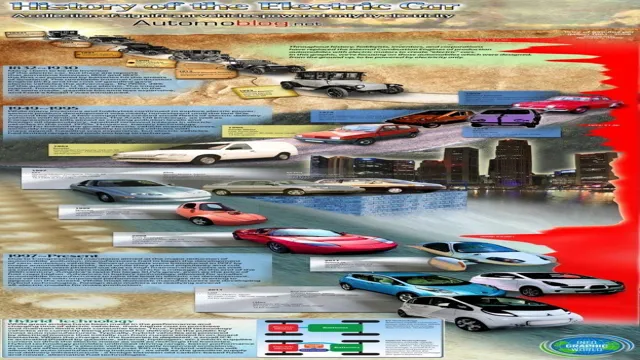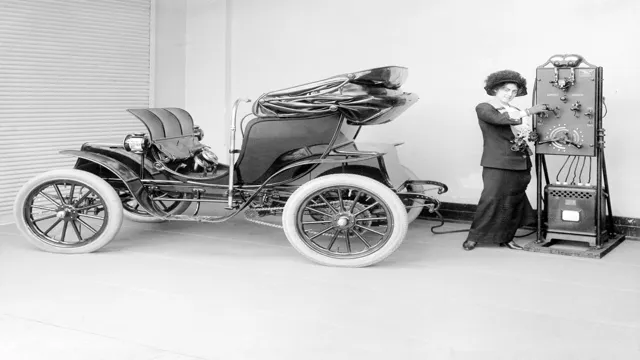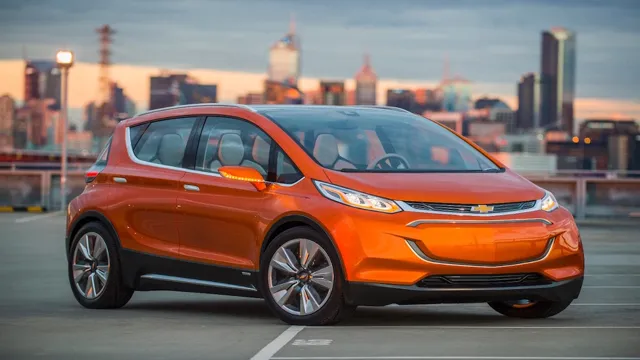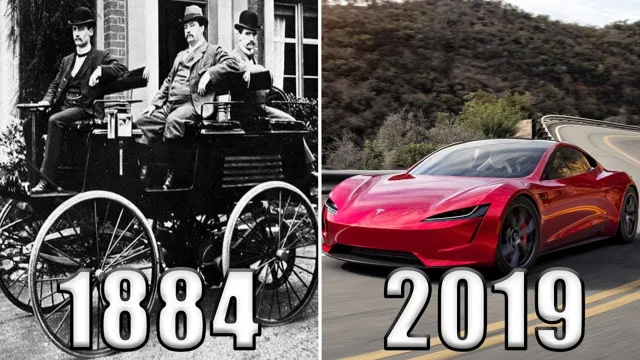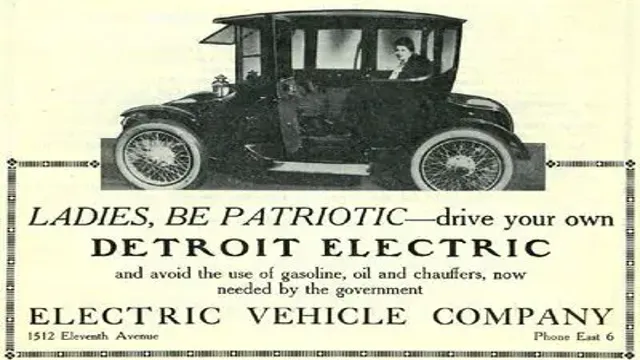Revolution on Wheels: Tracing the Fascinating History of Electric Cars in America
Electric cars have become a trend in the present time, but did you know that they have been present in America since the early 1800s? Yes, you read that right! The electric car’s history dates back to over a century ago, with various improvements and a fair number of struggles along the way. Over time, many inventors and companies have contributed to the development of electric vehicles. As technology evolves, the characteristics of electric cars transform, leading to a better and more sustainable driving experience.
In this blog post, we will dive into the history of the electric car in America and explore how the technology has evolved over the years. It’s time to drive through the past and explore the development of electric cars in America!
Early Development
The history of the electric car in America dates back to the late 1800s when electric vehicles (EVs) first appeared on the scene. At the time, electric cars were a popular choice for early motorists because they offered a smooth, quiet, and pollution-free ride. In fact, in 1900, electric vehicles accounted for as much as one-third of all vehicles on the road in the United States.
However, as gasoline-powered cars began to dominate the market due to improvements in engine technology and the discovery of vast oil reserves, EVs fell out of favor and became a niche market. Nonetheless, the early development of the electric car paved the way for the eco-friendly and technologically advanced EVs we see today. With advancements like longer-lasting batteries, faster charging times, and greater range, electric cars are becoming an increasingly attractive option for modern motorists who want to reduce their carbon footprint and save money on gas.
Late 1800s- Early 1900s experiments with electric cars
Electric cars have been a topic of discussion for over a century now, with experiments first initiated in the late 1800s. During this period, inventors like Thomas Davenport, Robert Anderson, and Sibrandus Stratingh worked on developing electric motors. In 1837, Davenport was able to build a model electric locomotive that was powered using a battery.
This invention initiated the development of electric vehicles that were propelled using rechargeable batteries. However, it wasn’t until the early 1900s that the concept of electric cars gained significant momentum. With the introduction of lead-acid batteries, electric vehicles became more efficient, faster, and had longer ranges.
Nonetheless, electric cars during this period were not yet mainstream, and internal combustion engine cars still dominated the market. Despite this, the groundwork for the development of electric cars had been laid down, and the future of the automotive industry was quickly changing.
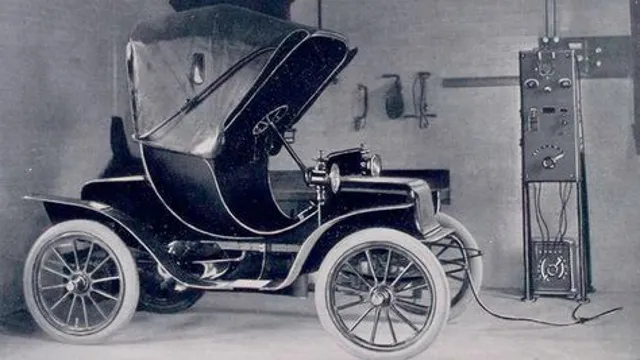
Decline of electric cars with rise of gasoline-powered cars
In the early development of the automobile industry, electric cars were a popular choice due to their ease of use and environmental friendliness. However, with the discovery of oil in the early twentieth century, gasoline-powered cars quickly rose in popularity. Gasoline, which was cheaper and more accessible than electricity, made gas-powered cars more practical for the average consumer.
As a result, electric cars became less and less popular and were eventually phased out almost entirely by the 1920s. It wasn’t until recently, with the renewed push for eco-friendly vehicles, that electric cars have begun to make a comeback. While gas-powered cars still dominate the market, the increasing availability of electric charging stations and advancements in battery technology may soon give electric cars the advantage once again.
Revival in the 21st Century
The history of the electric car in America dates back to the early 19th century when the concept of developing a motorized vehicle was first introduced. Though electric cars seemed to be a viable option, it wasn’t until the late 20th century that they started gaining widespread attention and were considered an eco-friendly alternative to the gas-guzzling cars. In recent years, there has been a revival in the demand for electric cars due to the increasing focus on sustainability and reducing carbon emissions.
With the advancements in technology, electric cars are becoming more affordable and efficient, making them a practical option for the everyday consumer. The future of transportation seems to be electric, and it’s exciting to see how the history of the electric car in America is paving the way for a cleaner, greener future.
Pioneering production of hybrid/electric cars by Toyota & Honda
In the early days of hybrid cars, Toyota and Honda were the pioneers in the production of environment-friendly vehicles. The demand for such cars increased drastically in the 21st century as people became more environmentally conscious and the effects of global warming became more evident. Toyota introduced the famous Prius in 1997, which was the world’s first commercially available hybrid car.
The Prius gained tremendous popularity due to its excellent fuel economy and low emissions. Honda, on the other hand, introduced the Insight, a two-door hybrid which also quickly gained a substantial following. Both companies have since released numerous hybrid and electric vehicle models, cementing their position as leaders in the industry.
Their efforts have contributed significantly to reducing emissions and pollution levels, making the world a cleaner place. As the world becomes more aware of how their actions affect the environment, one can expect even more innovative and eco-friendly vehicle options in the future, thanks to companies like Toyota and Honda.
Introduction of the Tesla Roadster and Model S
The Tesla Roadster and Model S brought a revival of electric cars in the 21st century. Before their introduction, electric cars were often considered slow and impractical. However, the Tesla Roadster proved that electric cars can be just as powerful and fast as their gasoline counterparts.
The Roadster was first introduced in 2008 and had an impressive range of 245 miles per charge. This breakthrough in technology paved the way for the Tesla Model S, which was introduced in 201 The Model S had a range of up to 335 miles per charge and was a luxury sports sedan.
It quickly became a status symbol for those who cared about the environment and wanted to make a statement. The success of the Roadster and Model S showed that electric cars can be practical and desirable. Tesla’s commitment to innovation and sustainability has reshaped the automotive industry and paved the way for a greener future.
Electric cars surge in popularity with government incentives and environmental concerns
Electric cars have experienced a remarkable revival in the 21st century as a result of several factors. One of the key reasons is the availability of government incentives that have made electric cars more affordable. These incentives include tax credits, rebates, and grants that make up for the initial high price of purchasing an electric car.
Another reason is the increasing concern for the environment. Electric cars are eco-friendly, producing fewer emissions and playing a significant role in the fight against global warming. Furthermore, advancements in battery technology have made electric cars more practical.
They have a longer range, take less time to charge, and require less maintenance than their predecessors. As a result, more people are switching to electric cars, including Elon Musk’s revolutionary Tesla. The future looks bright for electric cars as technology continues to improve and governments continue to offer incentives to encourage adoption.
Current State of Electric Cars
When people think of electric cars, they might picture Elon Musk’s Tesla leading the charge, but the history of the electric car in America goes back more than a century. In the early 1900s, electric cars were actually more prevalent than gasoline-powered cars. However, as Ford’s Model T was released and became more affordable, electric cars fell out of favor.
It wasn’t until the 1990s that electric cars made a comeback with the release of the General Motors EV1 and Toyota’s RAV4 EV. However, these early models were plagued by short driving ranges and high costs, and soon went out of production. In the past decade, advancements in battery technology and a growing awareness of the environmental impact of gasoline-powered cars have led to a resurgence of interest in electric cars.
Not only are electric cars now more affordable and have longer driving ranges, but many major automakers have made significant commitments to shift their production to electric vehicles in the coming years. The result is a burst of innovation in electric car technology and a hopeful glimpse into a future with cleaner, more sustainable transportation.
More than 40 different electric vehicles available in US market
Electric cars have come a long way in recent years, and the current state of the market is quite impressive. In the United States alone, there are now more than 40 different electric vehicles available to consumers. These range from small compact cars to larger SUVs, and even high-performance sports cars.
With advancements in technology, electric cars are becoming more affordable and are able to travel longer distances on a single charge. This, combined with the increasing availability of charging stations, makes electric cars a much more practical and viable option for everyday drivers. The future of transportation is definitely electric, and it’s exciting to see how this industry continues to evolve and grow.
Growth potential and future predictions for the electric car industry
The electric car industry is currently in a state of rapid growth with a promising future ahead. In recent years, advancements in technology have made electric cars more efficient and affordable. With increasing environmental concerns and government incentives, the demand for these eco-friendly vehicles is on the rise.
In fact, analysts predict that the sales of electric cars will reach 4 million in 2020, and by 2025, they could make up 10% of all global vehicle sales. As more manufacturers enter the market and battery technology improves, these numbers are expected to grow even further. While there are still some hurdles to overcome, such as improving charging infrastructure and battery life, the potential for growth in the electric car industry is enormous.
Consequently, electric cars are reshaping the future of transportation, providing a cleaner, more sustainable, and cost-effective way to travel.
Conclusion
The history of the electric car in America is a rollercoaster of ups and downs. From the early days of innovation and experimentation to the rise and fall of electric cars in the early 1900s, it’s clear that the electric car has been a source of fascination and frustration for car enthusiasts throughout history. However, with the recent surge in popularity and technological advancements, it seems that we are on the brink of a new era for the electric car.
So buckle up and get ready to embrace the electrifying future of America’s roads!”
FAQs
What was the first electric car produced in America?
The first electric car produced in America was the Baker Electric in 1899.
When did electric cars become popular in America?
Electric cars became popular in America in the early 1900s, with over 30,000 electric vehicles on the roads by 1912.
What factors contributed to the decline of electric cars in America?
The decline of electric cars in America was due to several factors, including the development of the internal combustion engine, the discovery of large oil reserves, and improvements in road infrastructure.
What led to the resurgence of electric cars in America?
The resurgence of electric cars in America was primarily driven by concerns over air pollution and the environmental impact of fossil fuels, as well as advancements in battery technology and the development of government incentives for electric vehicles.

